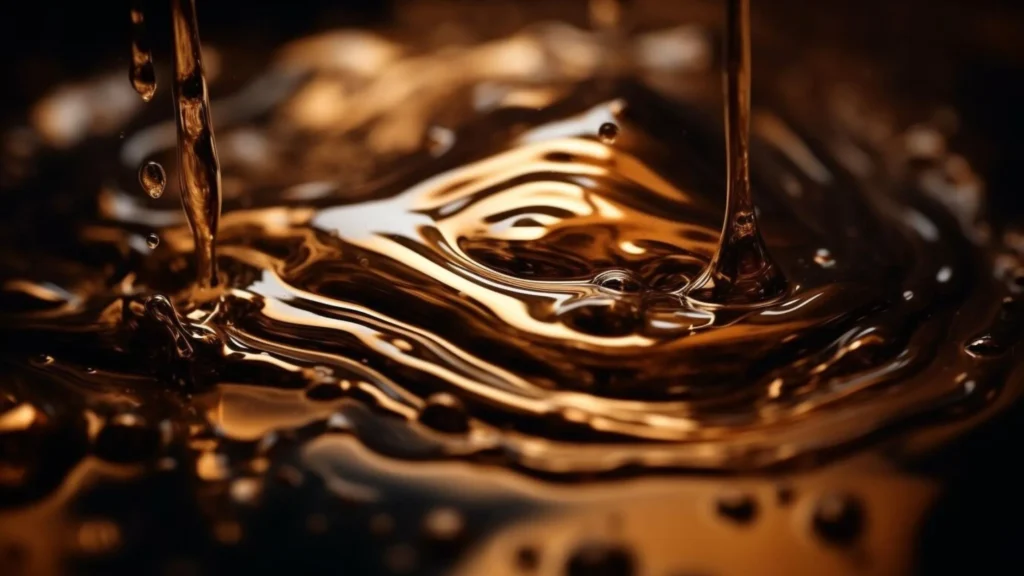
Deciphering Transmission Fluid Colors: What Do They Indicate?
Transmission fluid is an essential component that contributes significantly to the optimal performance of your vehicle’s transmission system. It lubricates moving parts, helps to cool the transmission, and facilitates gear shifting. So, what color is transmission fluid? Typically, transmission fluid is a bright red or pinkish hue when new, owing to the presence of additives and dyes. However, as it ages and undergoes wear and tear, its color may change, signaling potential problems within the transmission system. Let’s delve into the colors transmission fluid can take on and what they might signify.
What color is transmission fluid?
The following are the various colors transmission fluid can take
Red Transmission Fluid
Typically, transmission fluid is dyed red from the factory for easy identification. Fresh transmission fluid should appear a vibrant red, signaling it’s in good condition. This hue indicates that the fluid is clean and has a suitable chemical composition to perform its intended functions effectively. However, as transmission fluid ages, it can darken to reddish-brown, which is still generally acceptable.
Brown Transmission Fluid

If your transmission fluid has turned brown, it’s a sign that it’s overdue for a change. Brown transmission fluid indicates that the fluid has become contaminated with dirt, debris, and other particles over time. It may also suggest that the fluid has overheated, causing it to degrade and lose effectiveness. In either case, replacing the fluid is crucial to prevent transmission damage promptly.
Black Transmission Fluid
Black transmission fluid is a cause for concern and typically indicates severe degradation or contamination. What color is transmission fluid? Usually, it is a bright red or pink hue, indicating its cleanliness and proper functioning. However, black transmission fluid suggests that the fluid has been subjected to extreme heat or neglected for an extended period, necessitating immediate action to prevent further damage. If addressed, it may contain burnt particles and sludge, which can impair the transmission’s performance and lead to costly repairs.
Pink Transmission Fluid

In some cases, transmission fluid may appear pinkish, especially if it has been mixed with coolant due to a leaking radiator or transmission cooler. Pink transmission fluid may also indicate the presence of water contamination, which can cause corrosion and internal damage to the transmission components. If you observe a rosy hue in your transmission fluid, it’s crucial to pinpoint and resolve the root issue swiftly.
Milky or Frothy Transmission Fluid
Milky or frothy transmission fluid is a clear indicator of water contamination. This can occur due to a faulty transmission cooler, a leaking radiator, or driving through deep water. Water contamination can lead to corrosion and damage to internal transmission components, failing if not addressed promptly. If you observe milky or frothy transmission fluid, it’s crucial to investigate and resolve the issue to prevent further damage.
What to Do If You Notice Abnormal Transmission Fluid Colors
Suppose you observe any abnormalities in the color or condition of your transmission fluid, such as a dark or cloudy appearance. In that case, it’s essential to take prompt action to prevent further damage to your vehicle’s transmission. What color is transmission fluid? Transmission fluid typically ranges from red to brown when in good condition. However, if it appears dark or has a burnt odor, it may indicate contamination or overheating. Here are some steps to follow:
Check for Leaks: Examine the transmission system thoroughly for indications of fluid leakage, such as pools or drips beneath the vehicle. Swiftly attend to leaks to safeguard against fluid loss and potential transmission harm.
Schedule a Fluid Inspection: If you notice any unusual transmission fluid colors or signs of contamination, such as a burnt smell or murky appearance, schedule a transmission fluid inspection with a qualified mechanic or service center. What color is transmission fluid? Typically, it ranges from red to light brown. They can visually inspect the fluid and may recommend a fluid flush and replacement if necessary.
Diagnose Underlying Issues: If the transmission fluid appears severely degraded or contaminated, it may indicate underlying issues, such as worn components or internal damage, within the transmission system. Seeking professional diagnosis can be crucial in identifying and resolving underlying issues before they worsen into more significant challenges.
Follow Manufacturer Recommendations: Follow the manufacturer’s recommended maintenance schedule for transmission fluid changes and inspections. Regular fluid changes can help maintain the health and longevity of your vehicle’s transmission, reducing the risk of costly repairs down the road.
Conclusion
The hue of your transmission fluid holds vital clues about your car’s transmission health. So, what color is transmission fluid? While the red transmission fluid is normal and indicates that the fluid is in good condition, any deviation from this color should prompt further investigation. Whether it’s brown, black, pink, or milky, identifying the color of your transmission fluid can help you detect potential issues early and take appropriate action to maintain the health and longevity of your vehicle’s transmission system. Routine upkeep, such as adhering to the fluid checks and changes prescribed by your vehicle’s manufacturer, is indispensable in maintaining peak transmission functionality and dependability.





